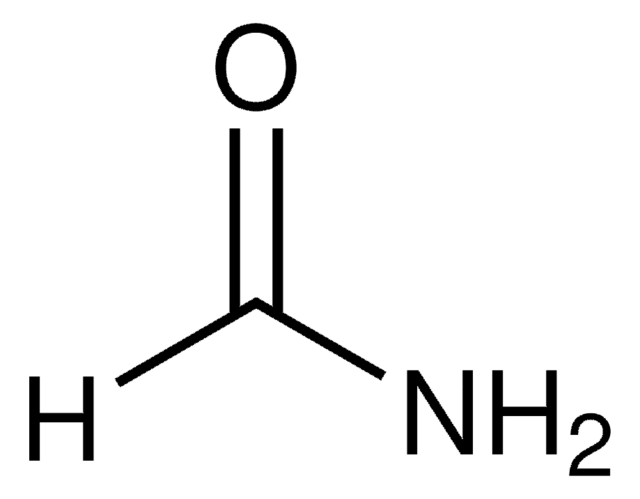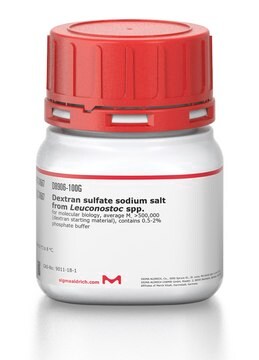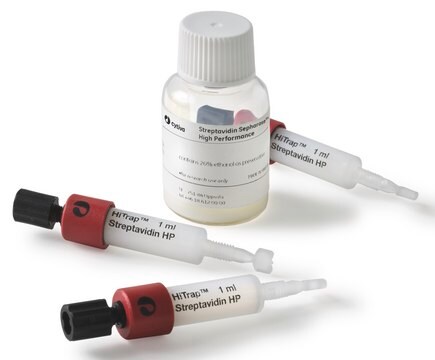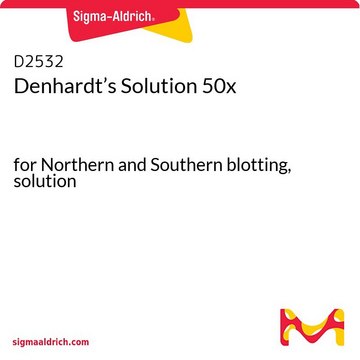S4117
Formamide, Deionized
Synonym(s):
DI formamide, formamide for hybridization
Sign Into View Organizational & Contract Pricing
All Photos(1)
About This Item
UNSPSC Code:
41116012
eCl@ss:
32160405
NACRES:
NA.21
Recommended Products
packaging
pkg of 500 mL
Quality Level
manufacturer/tradename
Chemicon®
technique(s)
hybridization: suitable
shipped in
wet ice
General description
This product is intended for use in hybridization applications for in situ, Southern, Northern, dot and slot blot analyses, and colony, plaque, and YAC screening. Formamide is used primarily as a component in probe hybridization solutions to promote probe hybridization specificity. It denatures nucleic acids by disrupting hydrogen bonds.
Application
Dilute formamide according to specific application requirements. Formamide concentrations of 45-50% are typically used in Southern and Northern analyses and a 50% or greater concentration for in situ hybridization techniques. In DNA to DNA hybridization, each 1% increase in formamide concentration lowers the Tm by 0.7%.
Research Category
All
All
Quality
Each lot of material is pre-filtered through a mixed-ion exchange resin to eliminate products of decomposition and residual metal cations. This filtering process guarantees that each lot has a final purity of greater than 99.5% and an adsorbance value of less than 0.02 adsorbance units at 280nm. Each lot then undergoes rigid quality control testing to insure that assay specifications are met prior to release.
Physical form
This preperation of formamide is deionized, triple distilled and packaged under nitrogen and is free of detectable DNAse, RNAse, and protease activity.
Storage and Stability
Store at -20°C. Keep cap tightly closed after opening or aliquot and store at -15°C to -25°C.
Legal Information
CHEMICON is a registered trademark of Merck KGaA, Darmstadt, Germany
Disclaimer
Unless otherwise stated in our catalog or other company documentation accompanying the product(s), our products are intended for research use only and are not to be used for any other purpose, which includes but is not limited to, unauthorized commercial uses, in vitro diagnostic uses, ex vivo or in vivo therapeutic uses or any type of consumption or application to humans or animals.
Signal Word
Danger
Hazard Statements
Precautionary Statements
Hazard Classifications
Carc. 2 - Repr. 1B - STOT RE 2 Oral
Target Organs
Blood
Storage Class Code
6.1C - Combustible acute toxic Cat.3 / toxic compounds or compounds which causing chronic effects
WGK
WGK 1
Flash Point(F)
305.6 °F
Flash Point(C)
152 °C
Certificates of Analysis (COA)
Search for Certificates of Analysis (COA) by entering the products Lot/Batch Number. Lot and Batch Numbers can be found on a product’s label following the words ‘Lot’ or ‘Batch’.
Already Own This Product?
Find documentation for the products that you have recently purchased in the Document Library.
Customers Also Viewed
Isaac A Klein et al.
Science (New York, N.Y.), 368(6497), 1386-1392 (2020-06-20)
The nucleus contains diverse phase-separated condensates that compartmentalize and concentrate biomolecules with distinct physicochemical properties. Here, we investigated whether condensates concentrate small-molecule cancer therapeutics such that their pharmacodynamic properties are altered. We found that antineoplastic drugs become concentrated in specific
Our team of scientists has experience in all areas of research including Life Science, Material Science, Chemical Synthesis, Chromatography, Analytical and many others.
Contact Technical Service







